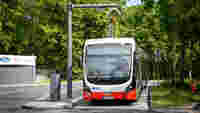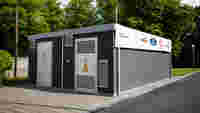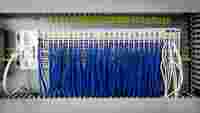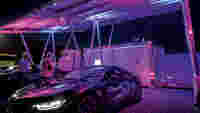E-Bus Charging Station: Breathing New Life into Second-Life Batteries

Since the end of December 2020, the Bocklemünd district of Cologne has had a ready-made e-bus charging station with a charging capacity of up to 500 kW; final commissioning was completed in April 2021. This was the practical result of a research project funded by the German Federal Ministry of Transport and Digital Infrastructure (BMVI) and Projektträger Jülich (PTJ). Externally, the e-bus charging station resembles a huge concrete block, but its interior shows off the results engineering know-how and a good dose of innovative spirit. The goal is to electrify local public transport bus networks – and do so sustainably. First of all, the required electricity is generated from the braking energy released by trolleys, which would otherwise be wasted. Secondly, the energy storage system in the e-bus charging station is made out of second-life batteries.
Energy and Battery Management Systems – with WAGO Automation Technology as the Data Hub:
Established, modular programmable logic controllers (PLCs) with simple, open Linux® programming
A large number of adaptable interfaces for visualization, analysis and processing of data flows.
Decentralized, user-friendly visualization on the WAGO controller, in HTML5 or Grafana for example










